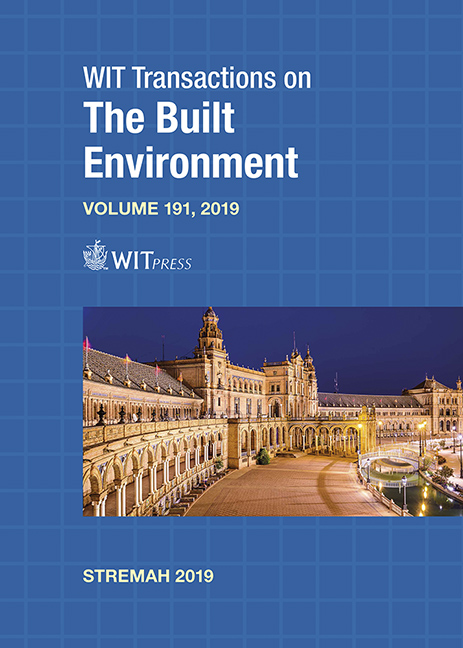ARCHITECTURAL RENEWAL: A RISING DAWN IN ILE-IFE?
Price
Free (open access)
Transaction
Volume
191
Pages
14
Page Range
43 - 56
Published
2019
Paper DOI
10.2495/STR190041
Copyright
WIT Press
Author(s)
CORDELIA O. OSASONA
Abstract
“Conservation”, as a word frequently in use colloquially, has several nuances. In its most common usage, it is tantamount to “preservation”. However, the term “architectural conservation” invariably relates to heritage structures deemed worthy of conservation-restoration intervention because of their latent iconic cultural significance. “Renewal”, on its part, extends the frontiers of restoration: while putting back what was lost, it accommodates some change in the original, so as to extend the current usefulness and general relevance of the heritage structure, i.e. it is synonymous with “adaptive re-use”. Even at the level of government intervention, relatively very little is going on in Nigeria in terms of heritage-structure conservation. Private (family) concern for architectural renewal of historic property is a rarity. Notwithstanding this relative neglect of Nigeria’s heritage architecture, all over the country there are many worthy samples of the nation’s building culture, attesting to the rich prospects of their conservation and renewal. The ancient city of Ile-Ife is not left out of this tourism (and other) potential of heritage architecture. The paper adopts the case-study approach in discussing some experimental work in architectural heritage renewal being undertaken in Ile-Ife. Specifically, two buildings, Lowa’s House and the Odeyemi Family House, are critiqued, setting out the factors predisposing them to socio-cultural and architectural significance, and highlighting the unique features introduced to make them contemporarily relevant. It is submitted that, given the transformations that such interventions invariably confer (visual, utilitarian and subtly, psycho-social), it may not be far-fetched to expect a ripple effect as a fall-out of these experiments.
Keywords
architectural renewal in Ile-Ife, Ilojo Bar, Omisore family, adaptive re-use, Lowa, Nigerian Brazilian architecture




